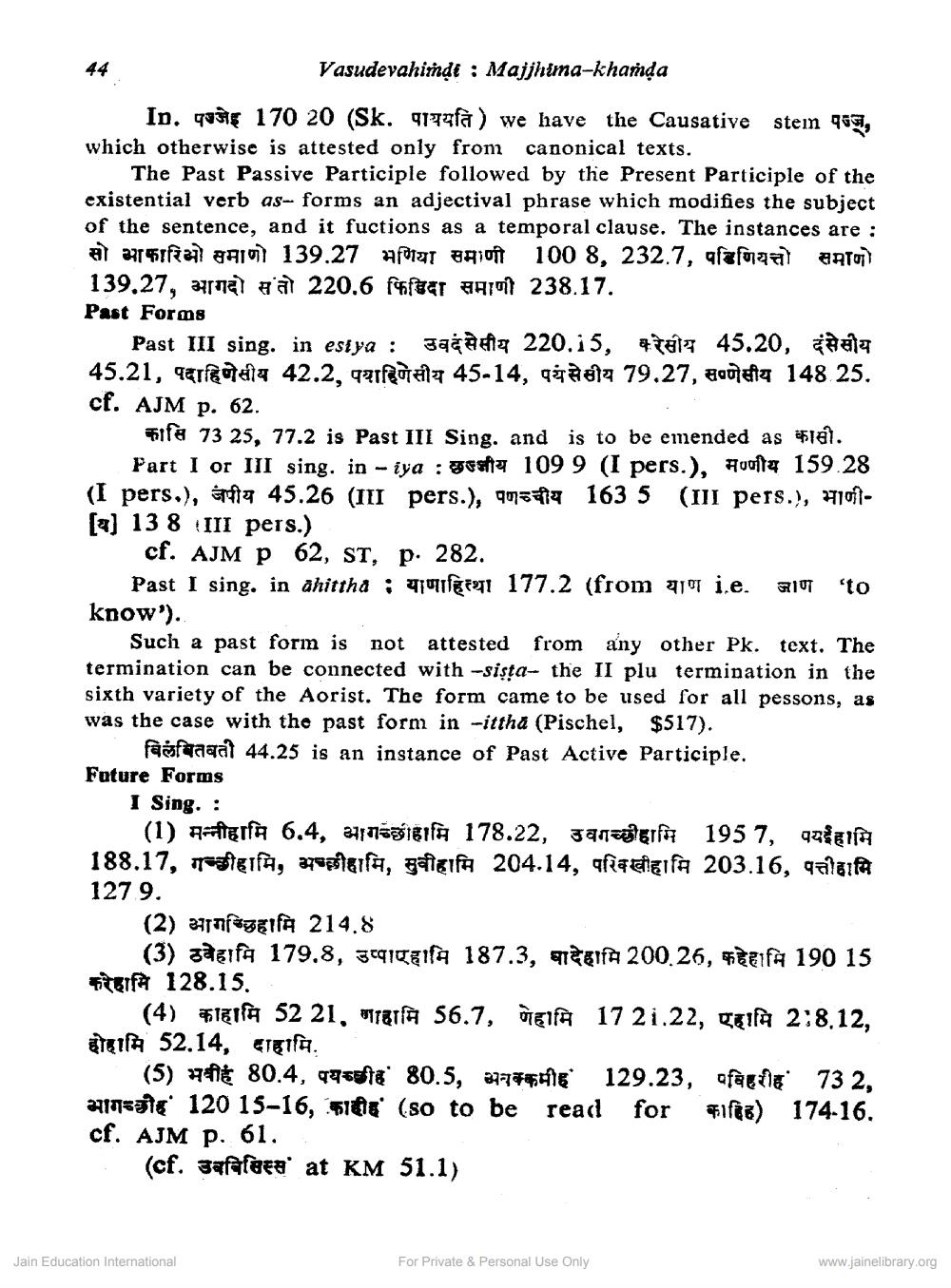________________
Vasudevahiindi : Majjhima-khanda
In. qu 170 20 (Sk. 917fà) we have the Causative stem 4651, which otherwise is attested only from canonical texts.
The Past Passive Participle followed by the Present Participle of the existential verb as- forms an adjectival phrase which modifies the subject of the sentence, and it fuctions as a temporal clause. The instances are : सो आकारियो समाणो 139.27 मणिया समाणी 1008.232.7, परिणियत्तो समाको 139.27, आगदो सतो 220.6 फिडिदा समाणी 238.17. Past Forms
Past III sing. in estya : उवदंसेसीय 220.15, करेसीय 45.20, दंसेसीय 45.21, पदाहिणेसीय 42.2, पयाहिणसीय 45-14, पयंसेसीय 79.27, सप्णेसीय 148 25. cf. AJM p. 62.
कासि 73 25, 77.2 is Past III Sing. and is to be emended as कासी.
Part I or III sing. in - iya : छज्जीय 1099 (I pers.), मण्णीय 159.28 (I pers.), जपीय 45.26 (III pers.), पणञ्चीय 163 5 (III pers.), भाणी[4] 138 III pers.)
cf. AJM p 62, ST, p. 282.
Past I sing. in ahittha : याणाहित्था 177.2 (from याण i.e. जाण to know').
Such a past form is not attested from any other Pk. text. The termination can be connected with -sista- the II plu termination in the sixth variety of the Aorist. The form came to be used for all pessons, as was the case with the past form in -ittha (Pischel, $517).
बिलंबितवती 44.25 is an instance of Past Active Participle. Future Forms ISing. :
(1) मन्नीहामि 6.4, आगच्छीहामि 178.22, उवगच्छीहामि 1957, पयई हामि 188.17, गच्छीहामि, अच्छीहामि, सुवीहामि 204.14, परिक्खीहामि 203.16, पत्तीहामि 1279.
(2) आगच्छिहामि 214.8
(3) ठवेहामि 179.8, उपाएहामि 187.3, पादेहामि 200.26, फहेहामि 190 15 करेहामि 128.15.
(4) काहामि 52 21, गाहामि 56.7, हामि 17 21.22, एहामि 2:8.12, होहामि 52.14, दाहामि.
___(5) भवीह 80.4, पयस्छीह 80.5, अरक्कमीह 129.23, पविहरीह 732, भागच्छीह 120 15-16, काहीह (so to be read for काहिह) 174.16. cf. AJM P. 61.
(cf. safãfera' at KM 51.1)
Jain Education International
For Private & Personal Use Only
www.jainelibrary.org




